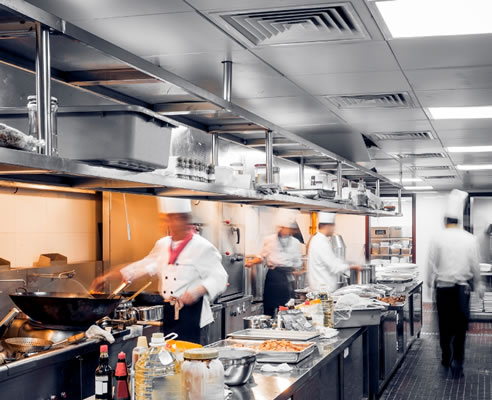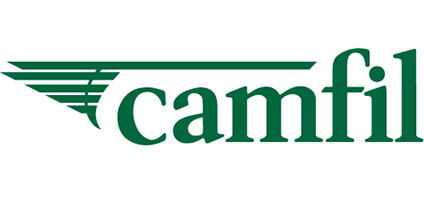Commercial Kitchen Exhaust Systems from Camfil Airepure
Essential first steps when designing kitchen exhaust Designers and specifiers face several challenges when dealing with clients for restaurants and new site proposals. Odour, noise and fire safety issues are all real concerns and the general expectations of air and noise quality by local residents is steadily increasing. Understanding the needs of each site is paramount and the first step in this process is to clarify what sort of foods are being prepared and by what cooking method. AS1668:2013 identifies seven (7) cooking process type nomenclatures. While every commercial kitchen is different, depending on the type of cuisine produced, varying amounts of moisture, grease, smoke and odour are emitted. Food products rapidly change at cooking temperatures and can form organic compounds, which are emitted in particulate and gaseous form. This is most always accentuated by the food water content vaporising. The result is a combination of solid particles, liquid droplets, vapour and gaseous phase (molecules) contaminants. If you compare the kitchen equipment and cooking methods of a traditional pub / bistro with a charcoal chicken shop - there is a great deal of difference in the potential grease, smoke and odour emissions produced. A traditional pub / bistro is Type 2* and likely to utilise low grease, medium heat producing equipment such as griddles, ranges, conventional fryers, tilting skillets, steam kettles and gas ovens producing low smoke levels and medium grease and odour levels. Whereas a charcoal chicken shop is Type 5* and likely to utilise high grease, high heat producing equipment such as an open flame charcoal bed, utilising solid fuel, producing very high grease, smoke and odour levels. The next step is to determine the air and noise quality expectations of the site surrounds. A commercial kitchen located within a residential high-rise would have significantly different expectations to one located within an industrial estate. The standards and/or guidelines of individual local councils should also be factored. The type of moisture, grease, smoke and odour emissions of the site as well as the air and noise quality expectations of the site surrounds are essential factors in determining the components and steps required to create the ideal kitchen exhaust abatement system that meets the air and noise quality expectations for the individual site. Further resources including a kitchen exhaust reference guide by cooking process type are available at www.airepure.com.au. Camfil Airepure is a leading air filtration company that provides unique, powerful, integrated air filtration solutions for our customers through six national office locations in Melbourne, Canberra, Sydney, Brisbane, Perth and Adelaide. Call 1300 886 353 to contact your local Camfil Airepure office today. Notes * Cooking process type nomenclature as per AS1668:2013
|
1300 886 353 64 Geddes Street, Mulgrave VIC 3170
|



 AIRAH Product of the Year Kaire®
AIRAH Product of the Year Kaire® HEPA Box-type Compact Filters by Camfil
HEPA Box-type Compact Filters by Camfil Dust & Fume Collection Systems - Gold
Dust & Fume Collection Systems - Gold Compact Dust Collectors - Quad Pulse
Compact Dust Collectors - Quad Pulse High-temperature HEPA Filters from
High-temperature HEPA Filters from CleanSeal Terminal HEPA Housings from
CleanSeal Terminal HEPA Housings from Safe Change HEPA Filter Containment
Safe Change HEPA Filter Containment HEPA Panel Filters - Megalam by Camfil
HEPA Panel Filters - Megalam by Camfil Terminal HEPA Filter Housings -
Terminal HEPA Filter Housings - Energy Saving Ventilation Filters -
Energy Saving Ventilation Filters - In-room Air Cleaners from Camfil
In-room Air Cleaners from Camfil Filters for Food Processing - ProSafe
Filters for Food Processing - ProSafe Energy Efficient HVAC Bag Filters -
Energy Efficient HVAC Bag Filters - Chemical Media for Gaseous Filtration
Chemical Media for Gaseous Filtration Air Filtration of Commercial Buildings
Air Filtration of Commercial Buildings Manifolded Fume Exhaust System for UNSW
Manifolded Fume Exhaust System for UNSW Environmental Air Quality Control with
Environmental Air Quality Control with Disposable Air Filters from Camfil
Disposable Air Filters from Camfil Commercial Air Filtration for Kitchen
Commercial Air Filtration for Kitchen Efficient Air Filtration Systems with
Efficient Air Filtration Systems with
